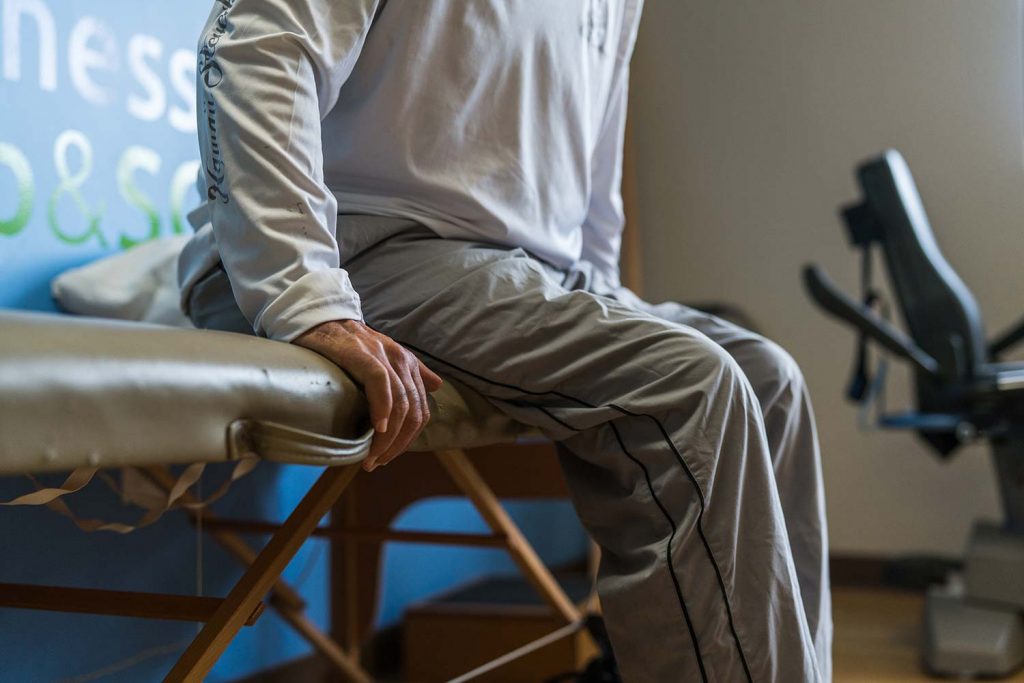Balance is the ability to move without falling and distribute your weight in order to hold a stable stationary position. A good balance exercise routine added to a regular exercise regimen will help seniors stay mobile longer. We create customized exercise routines to keep our seniors moving longer!
Balance training for seniors

Call now for more info or for a free consultation.
The Importance of Balance Training for Seniors
During the different states of life, our physical activity levels and needs change and go through a number of different phases. When we are young, we are naturally strong and flexible. Naturally motivated to run and play, we get a lot of exercise simply through our daily explorations and entertainment. As we get older, however, we take on responsibilities that tend to cut into our “play time.” Education, careers, and families take up much of our time, and our physical activity tends to get sacrificed. Furthermore, because we are focusing our energy on our various responsibilities, we have less motivation to get out and exercise when we do have free time.
Many of us have created structured exercise plans to make up for this natural deficit in activity as we get older. We force ourselves to make time for cardio exercise, weight lifting, yoga, and a variety of other forms of exercise, depending on our interests and goals. Throughout our 30s, 40s, and 50s, this structured exercise becomes more important, as it helps to regulate our weight, maintain heart health, mitigate accumulated injuries, and delay the onset of age-related diseases such as dementia, heart disease, diabetes, and some forms of cancer. But while strength and cardio training seem relatively obvious to us during middle age, we don’t typically give much thought to balance training. This is due to the simple fact that, for many of us, balance is not an issue until we reach the later stages of our lives.
Those in their 60s and beyond, however, know how important good balance is. Seniors are not only more prone to falls, but they are also much more susceptible to the injuries that accompany falling. Osteoporosis and other physical degeneration make seniors more likely to suffer debilitating broken bones, muscle tears, and ligament/tendon damage, and their bodies are much slower to recover from injuries of this nature. The quintessential fall-related injury for seniors is the broken hip, but there’s a reason for that stereotype—seniors simply fall more often and more awkwardly than younger people, and a traumatic injury such as a broken hip can be a life-ender for those in their 70s and 80s (or at least a lifestyle ender).
This is why it is so important for seniors and those who are approaching the later stages of their lives to invest time and energy into balance training. It may seem silly to have to train to balance, but the reality is that doing so with a physical therapist or other health and fitness professional can mean the difference between a debilitating fall that permanently impacts quality of life and enjoying a healthy, happy existence long into your 80s and even 90s. These exercises might be annoying and even feel pointless at times, but balance training is one of the best and most effective ways that we can actively prevent accidents and prolong our lives.
Obviously the best course of action is to begin a balance training regimen while you are still relatively young. Not only does this help to delay the loss of balance and muscle strength that comes with advanced age, but it also helps establish healthy habits and routines beforehand, making it easier for you to continue this practice as you get older. Yoga is a great way to improve balance while also maintaining flexibility and muscle tone, but for those who are not interested in yoga, there are a number of other options.
A variety of experts can help you create a program to improve your balance and strength, regardless of your age or fitness level, or you can simply create your own. The important thing is that you are integrating balance training into your other exercise routines to ensure that you build a strong foundation as you get older. But once you get to a certain age—between the mid-60s and mid-70s, depending on the person—it becomes increasingly important that specific exercises be added to your daily routine to help you maintain your balance and avoid dangerous falls. A physical therapist is a great option, as most seniors will typically already be working with physical therapy professionals to address the various injuries and ailments that we collect throughout life.
Whether you are still in your mid-30s or staring down your eighth decade, consider adding a balance training routine to your life today. Your future self will thank you!
